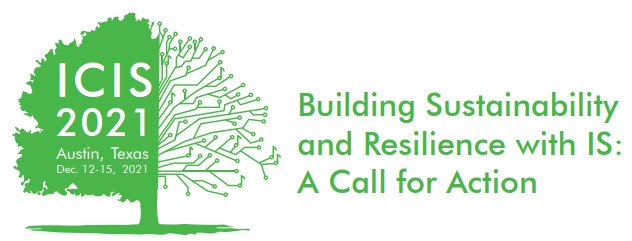Societal Impacts of IS
Loading...
Paper Number
2543
Paper Type
short
Description
Based on its popularity and wide dissemination eSports (i.e., the competitive play of video games) can be considered a tangible manifestation of the digital culture. Despite several positive outcomes and innovative opportunities, this playful evolution came with some questionable aspects as well affecting contemporary societies. One such instance is the gender gap in professional eSports, which describes the circumstance that the professional eSports scene is strongly male dominated, and females are substantially underrepresented. Despite some infrequent attempts, empirical research to better understand the gender gap in eSports is still scarce. Building on expectancy theory, we propose an empirical approach to comprehend achievement motivation as an intra-individual process consisting of different components (i.e., expectancy, instrumentality, first- and second-order valence) that in parts should differ based on gender. For this, we plan to use a survey and co-variance-based-statistics to compare the motivational processes, while controlling for demographic variables.
Recommended Citation
Kordyaka, Bastian and Brunnhofer, Marlies, "Self-Fulfilling Prophecies? Using Expectancy Theory to Explain Gender Disparities in eSports" (2021). ICIS 2021 Proceedings. 12.
https://aisel.aisnet.org/icis2021/soc_impact/soc_impact/12
Self-Fulfilling Prophecies? Using Expectancy Theory to Explain Gender Disparities in eSports
Based on its popularity and wide dissemination eSports (i.e., the competitive play of video games) can be considered a tangible manifestation of the digital culture. Despite several positive outcomes and innovative opportunities, this playful evolution came with some questionable aspects as well affecting contemporary societies. One such instance is the gender gap in professional eSports, which describes the circumstance that the professional eSports scene is strongly male dominated, and females are substantially underrepresented. Despite some infrequent attempts, empirical research to better understand the gender gap in eSports is still scarce. Building on expectancy theory, we propose an empirical approach to comprehend achievement motivation as an intra-individual process consisting of different components (i.e., expectancy, instrumentality, first- and second-order valence) that in parts should differ based on gender. For this, we plan to use a survey and co-variance-based-statistics to compare the motivational processes, while controlling for demographic variables.
When commenting on articles, please be friendly, welcoming, respectful and abide by the AIS eLibrary Discussion Thread Code of Conduct posted here.



Comments
06-Socimpact